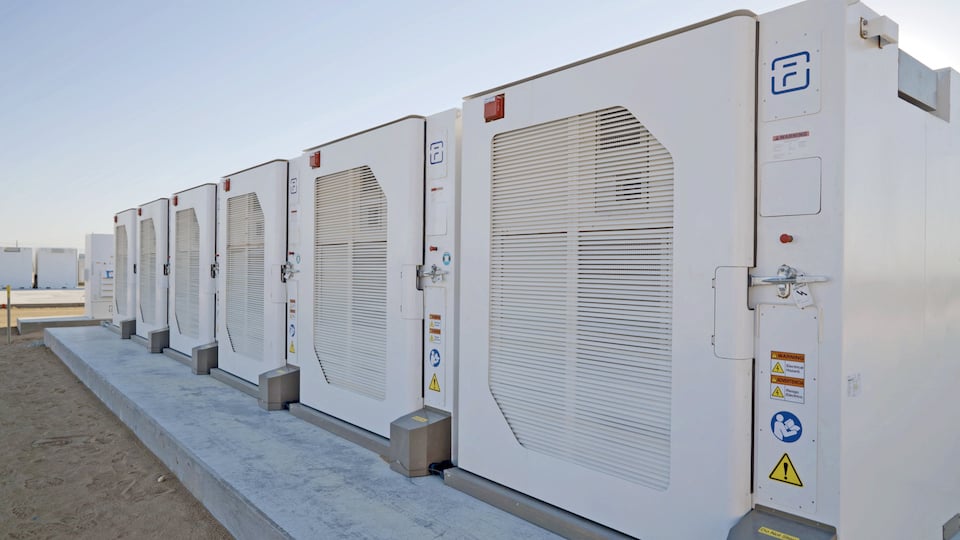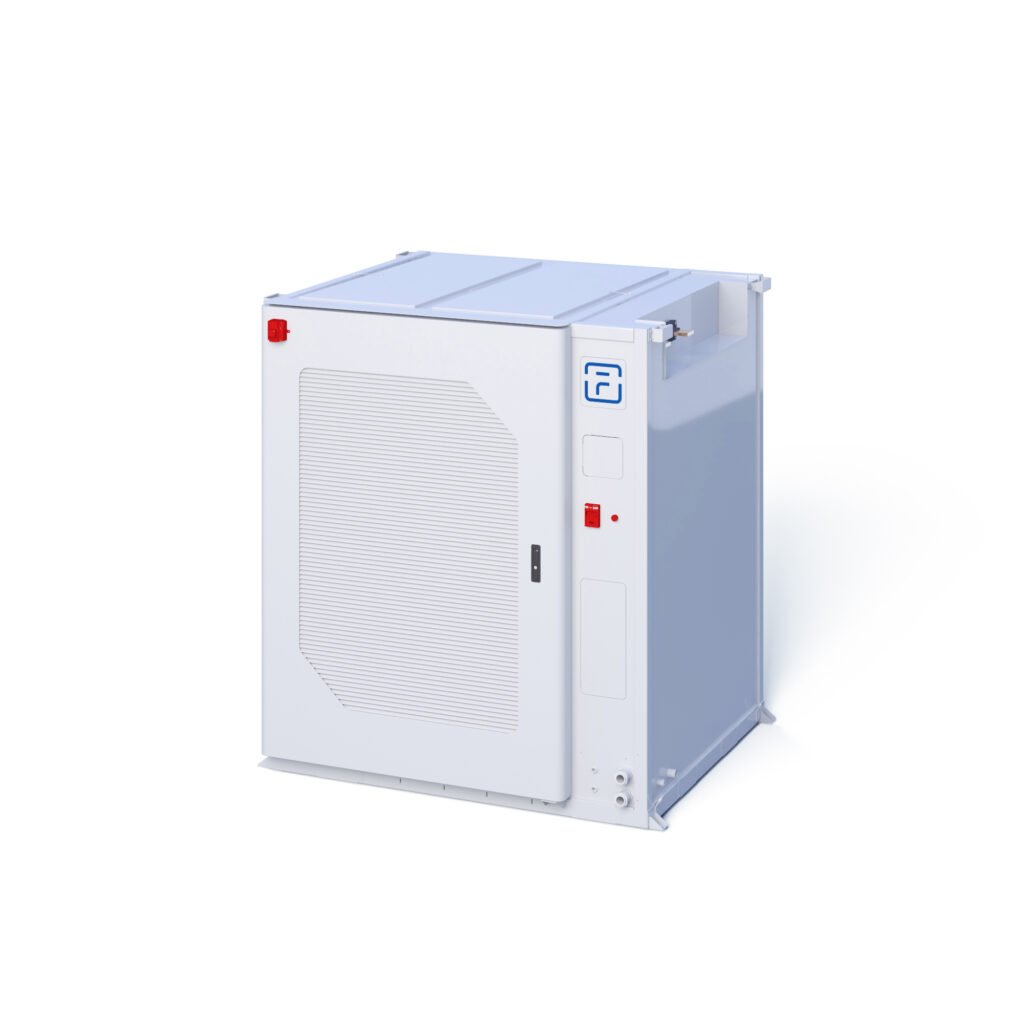
Creating a wider ecosystem of services and software applications is essential for system integrators to stay ahead as “certain parts of the value chain will increasingly become commoditised”, according to Julian Jansen, Growth & Market Development Director (EMEA) at Fluence, one of the largest players in the space.
Six months on from Fluence’s IPO which valued the company at close to US$5 billion, Energy-storage.news caught up with Jansen, previously an analyst at IHS Markit where he contributed to its coverage of the system integrator landscape before joining Fluence in mid-2021.
Enjoy 12 months of exclusive analysis
- Regular insight and analysis of the industry’s biggest developments
- In-depth interviews with the industry’s leading figures
- Annual digital subscription to the PV Tech Power journal
- Discounts on Solar Media’s portfolio of events, in-person and virtual
He discussed the modular versus bespoke approach to system integration, the importance of expanding into software and long-term services for the sector and the growth of bidding software as a revenue stream, while touching on global supply chain issues.
Julian Jansen will be among the speakers at this week’s Energy Storage Summit 2022, hosted by our publisher Solar Media in London, UK. Stay tuned to the site for coverage of the event, if you’re not able to attend.
Some companies in the past, like NEC Energy Solutions (recently bought by LG Energy Solution), took a very bespoke approach to each project whereas Fluence focuses on ready-to-go modular kits. Why is the modular and standardised model the future for you?
The energy storage industry remains nascent but is rapidly growing. Unsurprisingly, through the industry’s early growth cycle, over the last decade, there have been many players entering and exiting the market. Many of those may have different motivations and strategic reasons to do so. Fluence has and remains focused on battery-based energy storage and the surrounding ecosystem.
Having learned from over a decade of deploying energy storage – often the first in a market or application segment – our team has developed and continuously improved our product platform to enable technology and design flexibility, speed of deployment, reduction in total cost of ownership, and safety.
Ultimately, building deep market intimacy and working closely with our partners across the world enables us to continuously innovate and provide the right solutions for a market that does not stand still.
To what extent is your common approach a barrier to flexibility?
Scale and rapid delivery are both becoming absolutely critical parts of the energy storage industry as customers try to capture revenue streams which are volatile and changing. You get a few things through a shared common platform that’s modular and factory built.
First, you get component flexibility. You can incorporate various technologies to meet a common requirement, whether it’s power duration, battery technology etc.
You don’t have to do possibly custom designs and you have a technology agnostic approach which means we’re avoiding vendor lock-in and we’re reducing risk both for ourselves and for the customer.
Another crucial part of building a common platform is embedding safety. And safety is a critical driver for this industry as it is for the power industry as a whole. So if you embed safety in a standardised platform, it means it’s fully equipped with all comprehensive safety features throughout the technology stack. You have consistent quality control, and you can show your continuous safety upgrades based on the extensive research and development work that we’re doing.
And then the final element I touched upon is rapid delivery. You have repeatable efficiencies, design, permitting: it’s five times more modular than a typical container offering.
It allows us to configure the Cube and the overall system for the customer to follow new revenue opportunities or change the way they’re using the storage system, depending on the degradation and the revenue opportunities within the market.
And finally, it also allows us and our customers to optimise supply-demand dynamics within the battery industry and ensure that we deliver best-in-class technologies close to our customers.
Right now, companies which originate from different parts of the value chain are spreading across the system integrator market, how do you see that trend evolving?
What’s very important for us is understanding the requirements that a market puts on us and positioning our sixth-generation products to be built on a common foundation with that integrated hardware and software.
Ultimately, being able to provide as a baseline modular, factory-build replicable products and then layering on top the wider ecosystems of services and applications for storage becomes really critical to stay ahead within the evolving landscape because certain parts of the value chain will increasingly become commoditised.
So really, it’s important to build a common platform that helps customers maximise the revenue streams and make better decisions in that increasingly complex ecosystem, rather than looking at what may have been done in the past where customers and suppliers were learning together as the market and industry evolved.

Tell us more about the bidding software which you expanding, most notably a recent 1.1GW deal with AES to optimise the market activities of solar PV and energy storage plants in the US?
The bidding software is a critical part of the ecosystem that we are building that is helping customers change the way they power their world. It’s about growing that ecosystem to not only include our software and services but include third-party programmes too.
It’s currently available in California and Australian energy markets with plans to expand that market availability globally this year. It really helps renewable asset owners and operators to optimise the bidding and dispatch and make better, data-driven decisions in an increasingly complex and volatile market.
I can’t comment on specific markets within EMEA, but it’s clear that the region’s energy market is becoming increasingly complex with revenue streams changing rapidly and gas prices impacting wholesale price levels and ancillary service markets.
The importance of making real-time decisions across EMEA outlines the need to have greater bidding capabilities. AI-enabled ML learning-based software bidding software will be critical to optimising the long-term revenues of those markets.
Could you see the software side becoming sort of the core business for fluence in future away from like the actual kind of physical system integration part?
The clean energy transition will require around US$100 trillion-plus investment over the next 30 years, and we’ll need about 194GW of energy storage capacity to be installed by 2030. That just gives you an understanding of the scale that is needed to achieve the challenge that we’re facing.
As the leader within this market, we need to build on our global scale and reach to serve that increasing market.
I think most importantly is to really start building a unique ecosystem that changes the way customers power the world, and that ecosystem as-a-whole will include a range of third-party technology solutions alongside our own products and services.
It isn’t one of these pillars on their own that will become the overriding value creator, but it is the connection of all of these within an ecosystem that will determine success within this market.
How local is the system integrator market?
Scale drives cost optimisation which itself continues product development and technology optimization, and that reduces total cost of ownership for the customer. And both of those things are only achievable through a global operation and the global reach.
That is not possible when you operate in single markets, and you will not take advantage of the critical economies of scale that underly the wider dynamics of the battery industry though obviously you must recognise the unique requirements of local markets.
We’ve recently expanded to our 30th market with Taiwan. We are a global company born out of European and American groups and we’ve expanded heavily into Asia-Pacific.
How are the performance guarantees your buyers are asking for changing?
For us what is very critical is that the storage products we sell come with a clear services warranty and guarantee offering. Ultimately that is an increasingly important differentiator and focus for many customers.
Whatever the value streams are, be it existing ancillary service products or changing requirements, what is really critical is that the systems we deploy are flexible and accordingly warranties and guarantees are designed in a flexible way that allows them to capture the maximum revenue within those value streams.
And for us, understanding that and working very closely with our customers and partners to provide that flexibility and provide solutions that grow with the complexity in the energy market really determines the direction that we’re going with the services we’re offering.
Can you comment on recent supply chain issues and working with vendors?
We are seeing an overall increase in demand for Li-ion from multiple industries and it is a critical technology to achieving a lot of our decarbonisation goals.
Our product platform gives us a unique positioning in terms of being tech-agnostic, we avoid vendor lock-in, reduce risk, and work with a range of battery vendors and suppliers we therefore can take full advantage of wider supply and demand dynamics. Ultimately, we are making progress on many of the recent supply chain issues.

